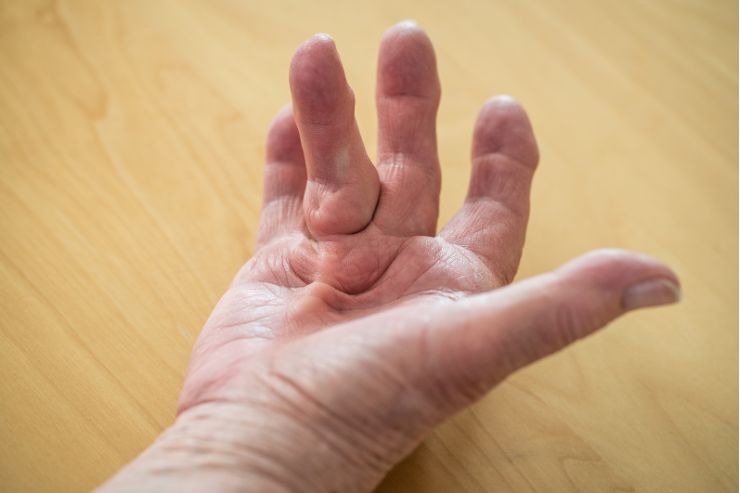Dupuytren’s Contracture
- Home
- Treatments
- Dupuytren’s Contracture

Dupuytren’s contracture is a condition that affects the hands, leading to the thickening and shortening of the connective tissue beneath the skin, primarily in the palm and fingers. This condition can gradually restrict finger movement, making it challenging to fully extend the fingers. Understanding Dupuytren’s contracture is essential for early recognition and effective management.
What Causes Dupuytren’s Contracture?
The exact cause of Dupuytren’s contracture remains unclear, but several factors may contribute to its development:
- Genetic Predisposition: A family history of Dupuytren’s contracture increases the likelihood of developing the condition, suggesting a genetic component.
- Age: The condition is more common in adults, particularly those over 50 years old.
- Gender: Men are significantly more likely to develop Dupuytren’s contracture than women.
- Ethnicity: It is more prevalent in individuals of Northern European descent.
- Medical Conditions: Conditions such as diabetes, epilepsy, and liver disease may increase the risk of developing Dupuytren’s contracture.
- Lifestyle Factors: Alcohol consumption and smoking have been associated with an increased risk.
Symptoms of Dupuytren’s Contracture
Dupuytren’s contracture typically progresses gradually and may present the following symptoms:
- Nodules: The first sign is often the formation of small nodules or lumps in the palm, which may be tender or painless.
- Thickening of Tissue: Over time, the tissue under the skin becomes thicker, leading to the formation of cords that can pull the fingers toward the palm.
- Finger Curling: As the condition advances, one or more fingers (usually the ring and little fingers) may bend inward, making it difficult to fully extend them.
- Difficulty with Hand Function: Individuals may notice challenges with hand movements, such as gripping, holding objects, or performing daily tasks.
Diagnosis of Dupuytren’s Contracture
Diagnosis is primarily clinical, based on a physical examination by a healthcare provider. The doctor will assess the hand’s appearance, palpate the nodules, and evaluate finger movement. The “table top test,” where the patient is asked to place their hand flat on a surface, can help determine the degree of contracture.

